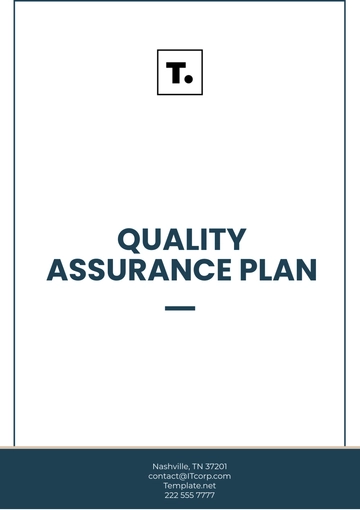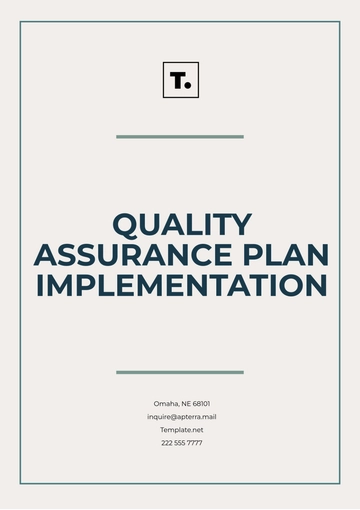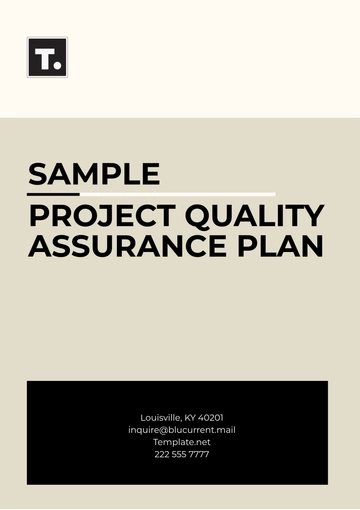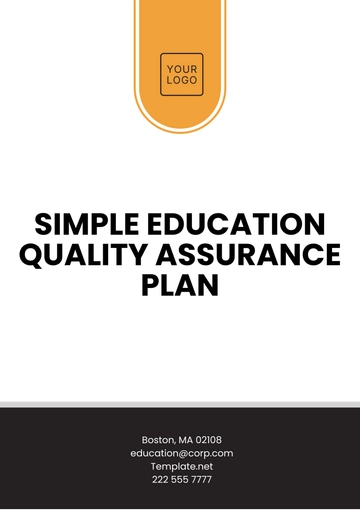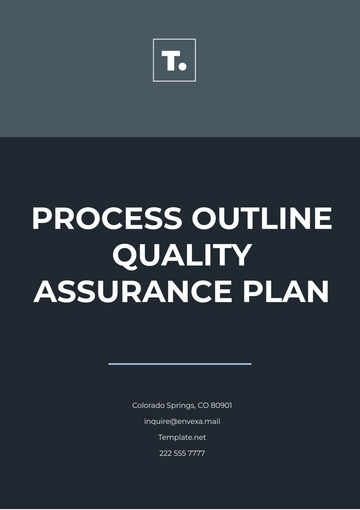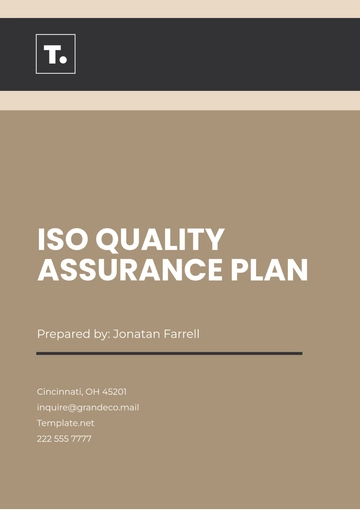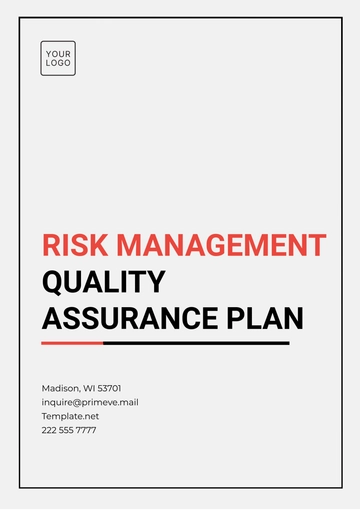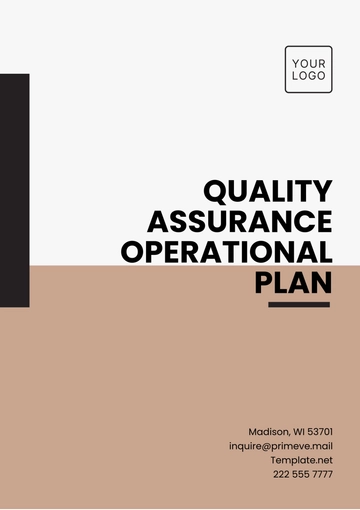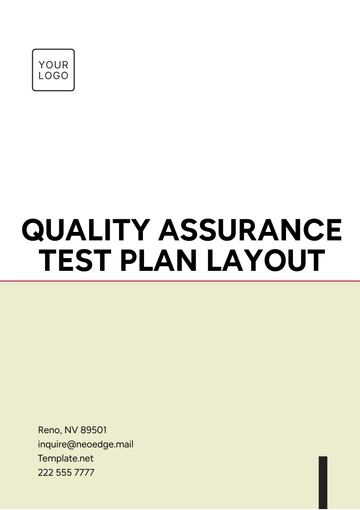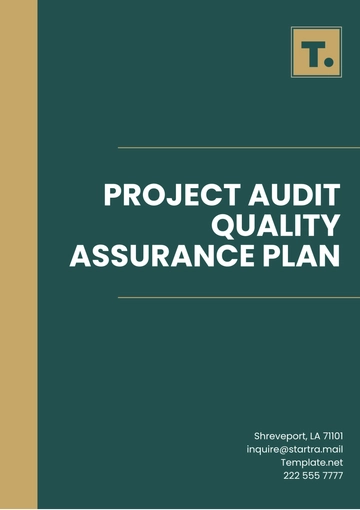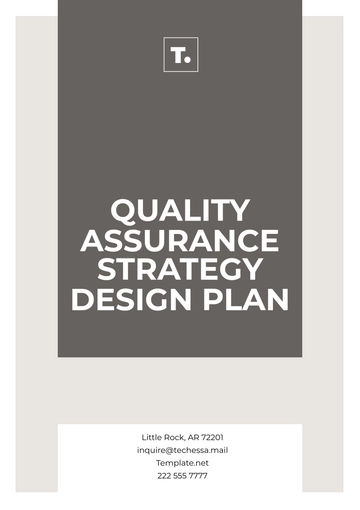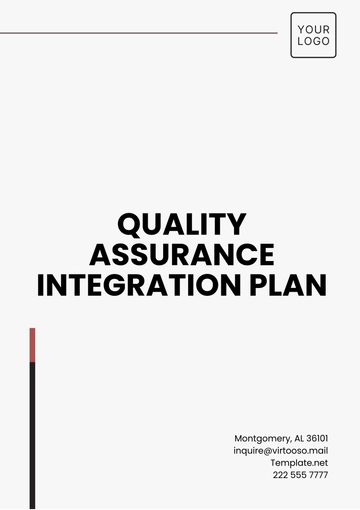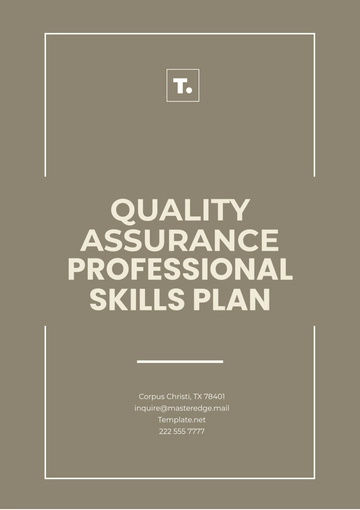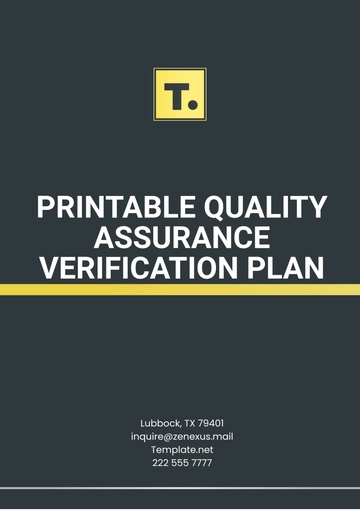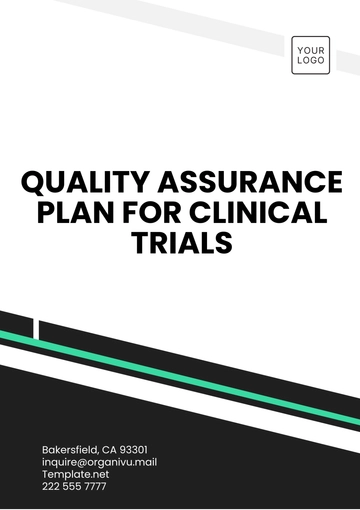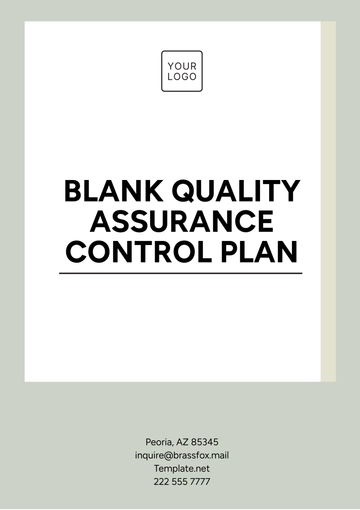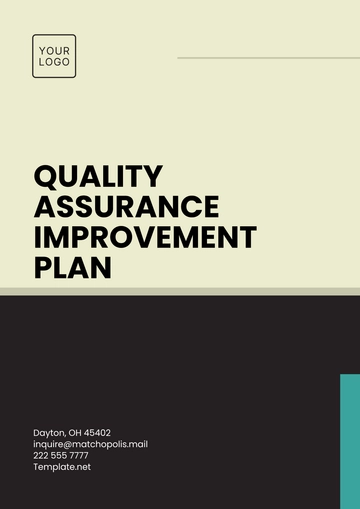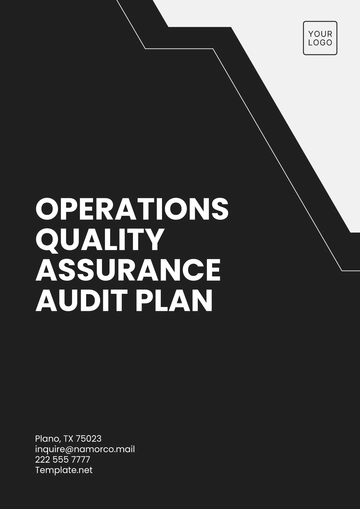Free Manufacturing Quality Assurance Plan
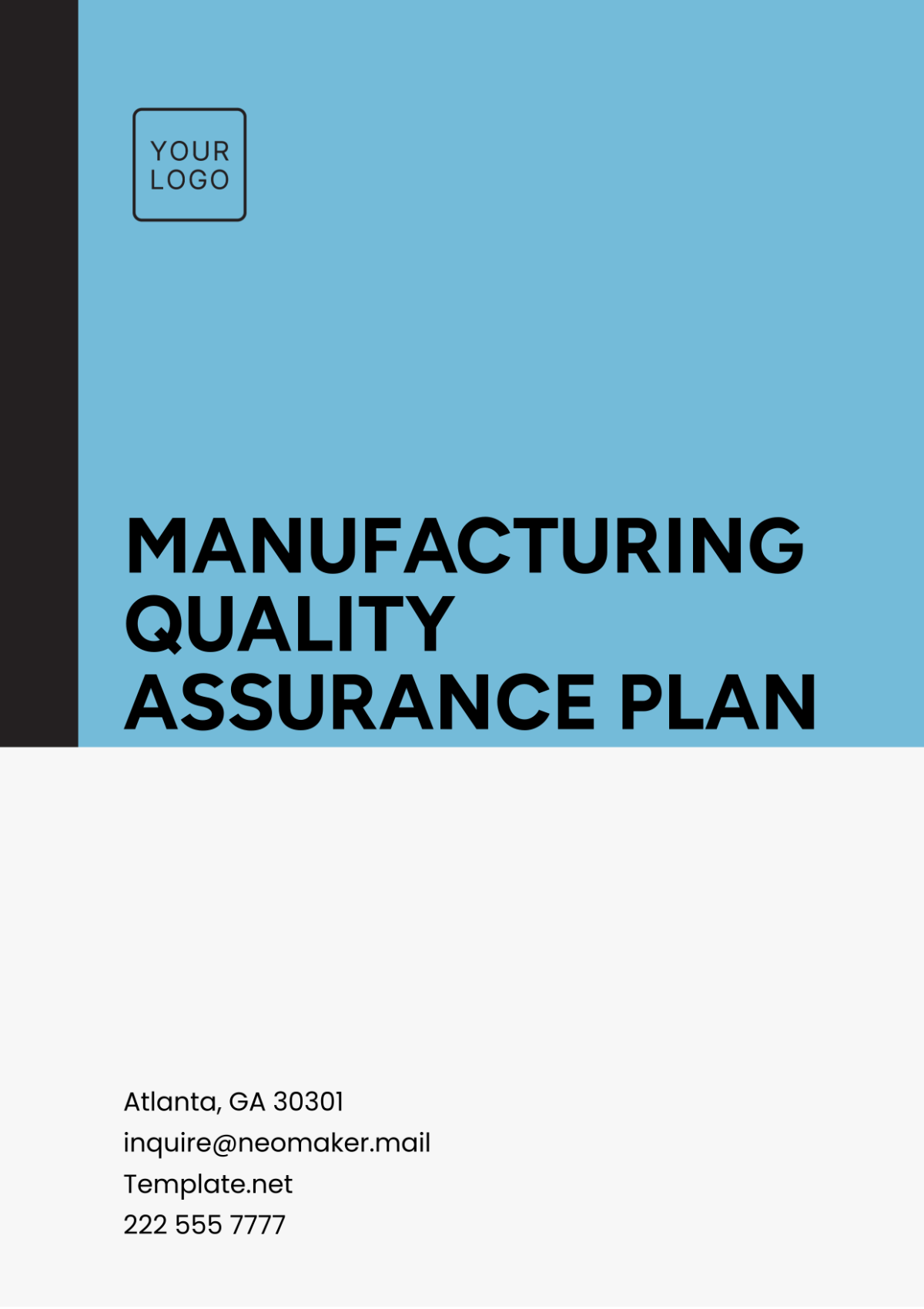
Product/Component Name: | Widget X |
Prepared by: | [Your Name] |
Company Name: | [Your Company Name] |
Date of Issue: | July 5, 2050 |
Document Version: | 1.0 |
1. Introduction
This Manufacturing Quality Assurance Plan (MQAP) outlines the quality management practices to ensure that Widget X meets all specified quality standards and customer expectations. This document provides a structured approach to quality assurance throughout the manufacturing process, from raw material sourcing to product delivery.
2. Scope
This MQAP applies to all manufacturing activities related to Widget X, including:
Material selection and procurement
Production processes
Quality control inspections
Final product evaluation and shipment
3. Objectives
The key objectives of this plan include:
To achieve a defect rate of less than 1% in finished products.
To ensure compliance with applicable quality standards and regulations.
To minimize production downtime through effective quality management.
To foster continuous improvement in manufacturing processes.
4. Quality Standards and Compliance Requirements
The manufacturing process adheres to the following quality standards and regulations:
ISO 9001: Quality management systems requirements to enhance customer satisfaction.
ASTM F2924: Standard specification for additive manufacturing of polymer parts.
FDA Regulations: For any components intended for medical use, ensuring safety and effectiveness.
5. Roles and Responsibilities
Quality Assurance (QA) Team: Responsible for developing quality policies, conducting audits, and providing training on quality standards.
Production Team: Ensures compliance with SOPs and addresses any production-related quality issues.
Quality Control (QC) Inspectors: Perform routine inspections and testing of materials and finished products, documenting results and anomalies.
6. Supplier Quality Control
6. Supplier Quality Control
To maintain high-quality standards, the following supplier quality control measures are implemented:
Supplier Selection and Approval: Only suppliers who meet stringent quality criteria will be approved for use, assessed through performance metrics and past audits.
Incoming Material Inspection: All raw materials must pass an inspection upon arrival, including verification of compliance with specifications and sampling for physical and chemical analysis.
7. Process Control and Inspection Procedures
Manufacturing processes will follow these control measures:
Standard Operating Procedures (SOPs): Each step of the manufacturing process will be detailed in SOPs, which are regularly reviewed and updated.
In-Process Inspections: Quality checks will occur at critical stages, including after assembly with visual inspections for defects and before packaging with final dimensional checks against specifications.
8. Product Testing and Quality Control
The following testing procedures will be conducted before shipment:
Mechanical Testing: Tensile strength and fatigue tests will be conducted to ensure durability.
Functional Testing: Each unit will undergo functional testing to verify performance specifications, including load tests to confirm operational integrity and performance tests under expected conditions.
9. Documentation and Recordkeeping
All quality-related activities will be documented, including:
Inspection reports: Details of inspections conducted and outcomes.
Test results: Documenting the results of mechanical and functional tests.
Corrective action logs: Recording actions taken to address non-conformances, including root cause analysis and follow-up evaluations.
10. Non-Conformance and Corrective Actions
In the event of non-conformance, the following procedures will be followed:
Identification and Segregation: Non-conforming products will be clearly labeled and separated from compliant items.
Non-Conformance Report (NCR): An NCR will be generated that includes a description of the non-conformance, an investigation of root causes, and recommended corrective actions to prevent recurrence.
Corrective Actions Implementation: Steps will be taken to rectify the issue, followed by a verification process to ensure effectiveness.
- 100% Customizable, free editor
- Access 1 Million+ Templates, photo’s & graphics
- Download or share as a template
- Click and replace photos, graphics, text, backgrounds
- Resize, crop, AI write & more
- Access advanced editor
Streamline your manufacturing processes with the Manufacturing Quality Assurance Plan Template from Template.net. This fully editable and customizable template empowers you to create a tailored quality assurance strategy. Easily modify every detail using our AI Editor Tool, ensuring your plan aligns perfectly with your operational needs and quality standards, enhancing efficiency and effectiveness.
You may also like
- Finance Plan
- Construction Plan
- Sales Plan
- Development Plan
- Career Plan
- Budget Plan
- HR Plan
- Education Plan
- Transition Plan
- Work Plan
- Training Plan
- Communication Plan
- Operation Plan
- Health And Safety Plan
- Strategy Plan
- Professional Development Plan
- Advertising Plan
- Risk Management Plan
- Restaurant Plan
- School Plan
- Nursing Home Patient Care Plan
- Nursing Care Plan
- Plan Event
- Startup Plan
- Social Media Plan
- Staffing Plan
- Annual Plan
- Content Plan
- Payment Plan
- Implementation Plan
- Hotel Plan
- Workout Plan
- Accounting Plan
- Campaign Plan
- Essay Plan
- 30 60 90 Day Plan
- Research Plan
- Recruitment Plan
- 90 Day Plan
- Quarterly Plan
- Emergency Plan
- 5 Year Plan
- Gym Plan
- Personal Plan
- IT and Software Plan
- Treatment Plan
- Real Estate Plan
- Law Firm Plan
- Healthcare Plan
- Improvement Plan
- Media Plan
- 5 Year Business Plan
- Learning Plan
- Marketing Campaign Plan
- Travel Agency Plan
- Cleaning Services Plan
- Interior Design Plan
- Performance Plan
- PR Plan
- Birth Plan
- Life Plan
- SEO Plan
- Disaster Recovery Plan
- Continuity Plan
- Launch Plan
- Legal Plan
- Behavior Plan
- Performance Improvement Plan
- Salon Plan
- Security Plan
- Security Management Plan
- Employee Development Plan
- Quality Plan
- Service Improvement Plan
- Growth Plan
- Incident Response Plan
- Basketball Plan
- Emergency Action Plan
- Product Launch Plan
- Spa Plan
- Employee Training Plan
- Data Analysis Plan
- Employee Action Plan
- Territory Plan
- Audit Plan
- Classroom Plan
- Activity Plan
- Parenting Plan
- Care Plan
- Project Execution Plan
- Exercise Plan
- Internship Plan
- Software Development Plan
- Continuous Improvement Plan
- Leave Plan
- 90 Day Sales Plan
- Advertising Agency Plan
- Employee Transition Plan
- Smart Action Plan
- Workplace Safety Plan
- Behavior Change Plan
- Contingency Plan
- Continuity of Operations Plan
- Health Plan
- Quality Control Plan
- Self Plan
- Sports Development Plan
- Change Management Plan
- Ecommerce Plan
- Personal Financial Plan
- Process Improvement Plan
- 30-60-90 Day Sales Plan
- Crisis Management Plan
- Engagement Plan
- Execution Plan
- Pandemic Plan
- Quality Assurance Plan
- Service Continuity Plan
- Agile Project Plan
- Fundraising Plan
- Job Transition Plan
- Asset Maintenance Plan
- Maintenance Plan
- Software Test Plan
- Staff Training and Development Plan
- 3 Year Plan
- Brand Activation Plan
- Release Plan
- Resource Plan
- Risk Mitigation Plan
- Teacher Plan
- 30 60 90 Day Plan for New Manager
- Food Safety Plan
- Food Truck Plan
- Hiring Plan
- Quality Management Plan
- Wellness Plan
- Behavior Intervention Plan
- Bonus Plan
- Investment Plan
- Maternity Leave Plan
- Pandemic Response Plan
- Succession Planning
- Coaching Plan
- Configuration Management Plan
- Remote Work Plan
- Self Care Plan
- Teaching Plan
- 100-Day Plan
- HACCP Plan
- Student Plan
- Sustainability Plan
- 30 60 90 Day Plan for Interview
- Access Plan
- Site Specific Safety Plan
